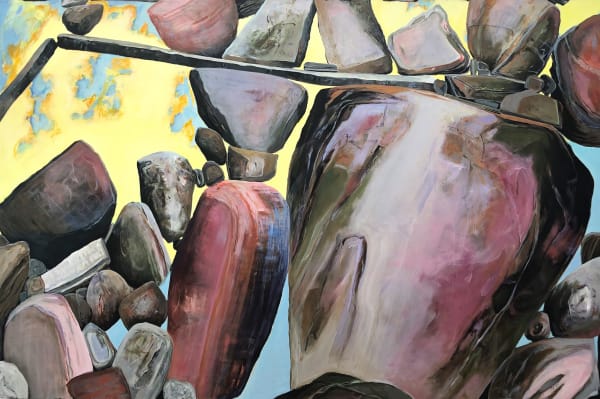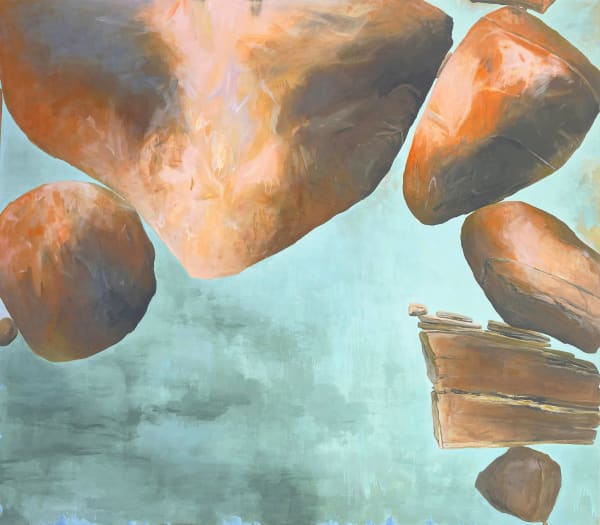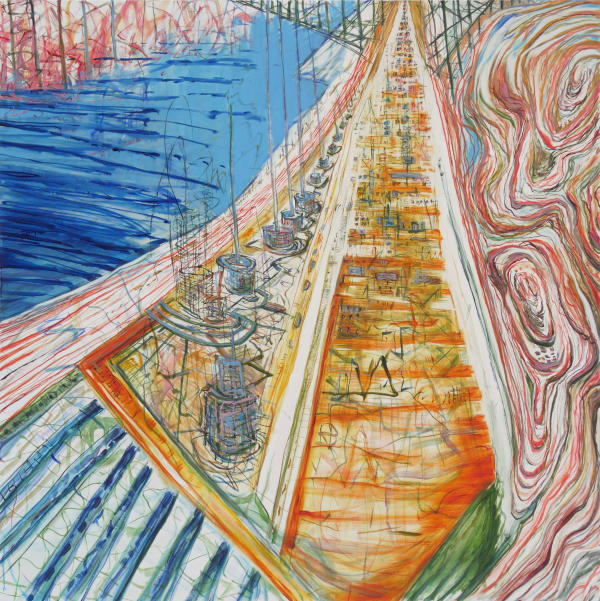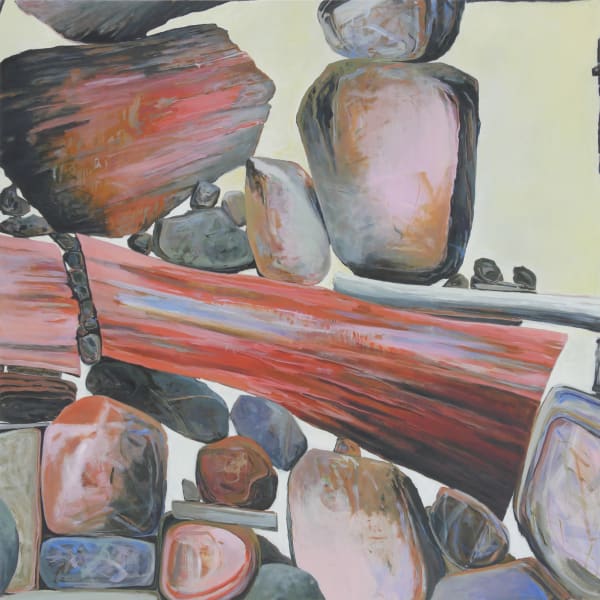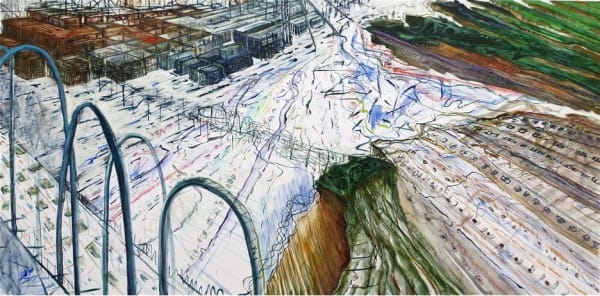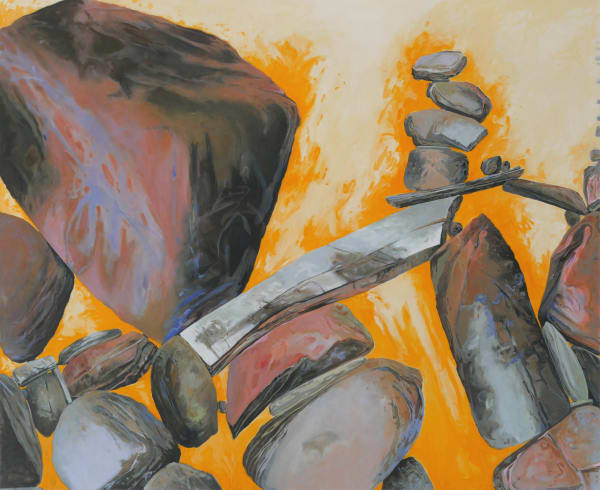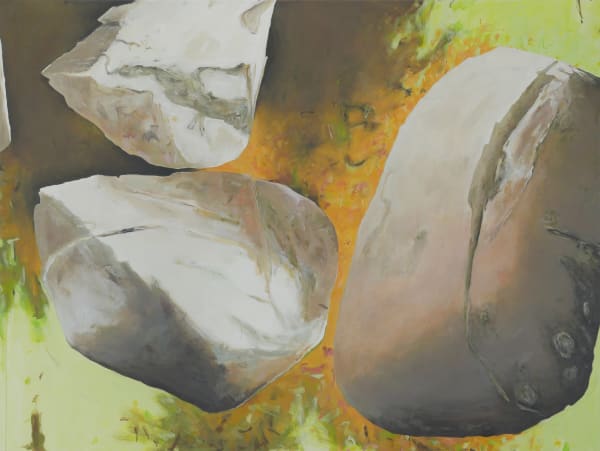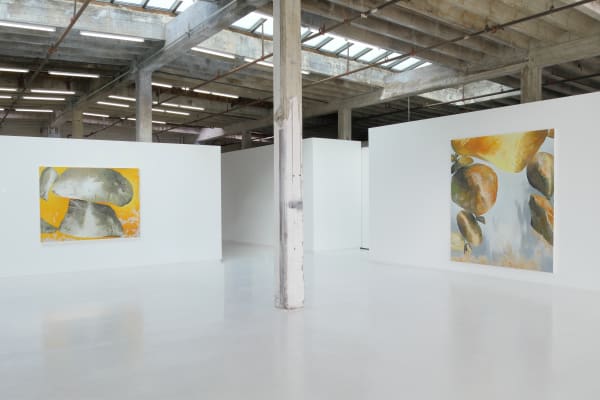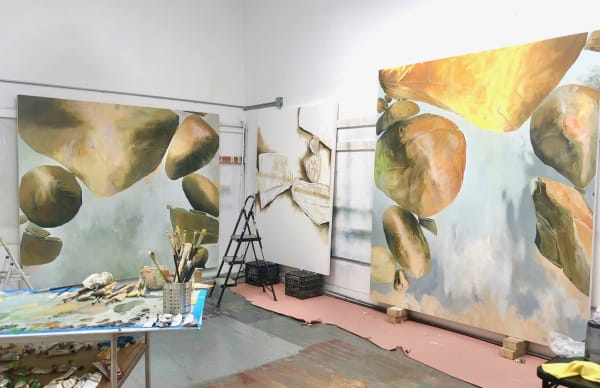Judith Belzer's methodology ranges across performance, installation and painting. But no matter the medium or the specific subject matter, at its heart, all of her work reflects upon our complicated relationship to nature.
Originating in the daily act of walking outdoors, Belzer's artistic practice fits as neatly within the lineage of the performative British walking artists Hamish Fulton and Richard Long, or the early found object installations of Tony Cragg, as it does landscape painting. Her walking practice is a meditation "to quiet the overactive, talky part of my head," a means of situating her body within a place in order to gain perspective (on her environment and herself), and an opportunity to collect objects, which she later arranges into installations.
Belzer's aesthetic concerns emanate from a fascination with form. Broken, twisted, corroded or spent, the objects she picks up on her walks are both organic and man-made. Peculiar things, once with a purpose, are now unidentifiable or useless. She brings both the physical things and the circumstances of their discovery back to the studio. There, she arranges the bits and pieces on tables and in cabinets. This very human endeavor—the attempt to make sense of the world by creating order through sorting, grouping and systematizing—becomes a kind of sketchbook, a "thinking with her hands."
Organizing by shape, texture and color, she arranges for rhythm and looks for rhymes. She learns how a dried vine doubles for a rubber band, a spent wisteria pod could pass for a rusted spring, or that a tangle of fishing line is the twin of Spanish moss. She has come to understand that the man-made and biological are not so easily distinguished or defined. And the patterns and textures—common between the machined and organic—inspire the geometries, shapes and mark-making techniques that influence her painting vocabulary.
With that eclectic, painterly language, she interprets the forms of massive dams, the locks of the Panama Canal, or the intersection of the San Francisco Bay with the industrial complexes on its shores. Energetic, sometimes even agitated, the paintings viscerally evoke the encounter with places impacted by the actions of humans, mapping the manufactured landscapes we've imposed upon natural ones. Her aim is to conjure for the viewer her own emotional experience of the terrain.
Her most recent paintings are of boulders. Top-heavy and improbably balanced, the precariousness of their equilibrium threatens imminent collapse. Metaphors, perhaps, for the imperiled condition of our planet as well as current political and social upheaval, they're an apt reflection of the early 21st century zeitgeist. Who among us doesn't feel the ground shifting beneath our feet? How do we manage to not fall apart?
But as unsettling as instability can be, these paintings are beautiful. The boulders they depict are not the jagged product of violent cataclysm; they've been rolled smooth by the slow advance of glaciers or burnished by the tumble of constantly moving water. They're part of something bigger and older than us. They lean into each other, interlocked, holding each other up. There's comfort in them. A stillness. An acceptance that change is part of the natural order. That balance, by definition, is precarious.
As humans, we tend to view ourselves as outside the natural world. Beyond it. Above it. We have a schizophrenic view of nature as something either pure and sacred or a force to battle, conquer and control. Both perspectives are simplistic and have led us into dangerously unsustainable practices. Belzer posits that we are not separate from nature, but part of it. The objects she collects and the paintings she makes zero in on the micro and macro sites of that convergence. Walking—leaving the insular environment of the artist's studio and going out into the world—is both the way she experiences those connections, and a metaphor for transcending herself and engaging with the world.
Judith Belzer, who was born and grew up in a suburb of Chicago, now divides her time between Berkeley, California and a small farm in rural Connecticut. She received a degree in English from Barnard College and studied at the New York Studio School. She is a visiting lecturer in the Department of Visual Art and Environmental Studies at Harvard University.
-

Judith Belzer
Weather Report 7 Feb - 21 Mar 2026Read more -

Drawn to Drawing
12 Jul - 16 Aug 2025Todd Hosfelt combines approximately 200 drawings in an installation designed to reveal thematic and conceptual relationships across time and place. In drawings spanning the globe as well as the 16th...Read more -

Judith Belzer
Where We Stand 26 Mar - 23 Apr 2022In her debut exhibition at the gallery, Judith Belzer presents her newest series of paintings developed over the past 3 years. The unusual protagonists in this body of work are...Read more -

Where We Are
23 Oct - 24 Nov 2021In a group exhibition marking this moment in history (and celebrating the 25th anniversary of Hosfelt Gallery) the work of 34 artists is employed to reflect on the zeitgeist of...Read more
-

HG Magazine Issue no. 37
Judith Belzer & Birgit Jensen exhibitions open, Publications, Museum Exhibitions March 17, 2022Opening March 26, 2022: Birgit Jensen: Enacting Arcadia Judith Belzer: Where We Stand Artwork Explained: Jay DeFeo Recent Publication: Liliana Porter Museum ExhibitionsRead more -

HG Magazine Issue no. 32
Judith Belzer joins the gallery; plus Rina Banerjee, Alan Rath, pi(e) July 20, 2021Introducing Judith Belzer Rina Banerjee & Rachel Kent: Conversation Recap An Artwork Explained: Alan Rath's Huge Pi 808 We Recommend: Pi(e)Read more
-
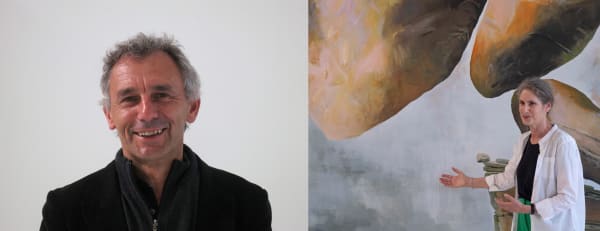
In Conversation: Bernard Lokai and Judith Belzer
1 Jun 2023Join us in the gallery for cocktails and a conversation between artists Bernard Lokai and Judith Belzer about Lokai's current exhibition, 24.2.22 . Registration required...Read more -

Exhibition Tour: Judith Belzer & Julie Rodrigues Widholm
21 Apr 2022Please join us in the gallery for a tour of Where We Stand with artist Judith Belzer and Julie Rodrigues Widholm, Director of UC Berkeley...Read more










